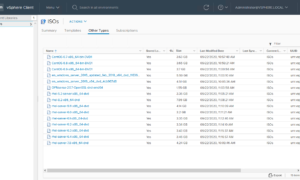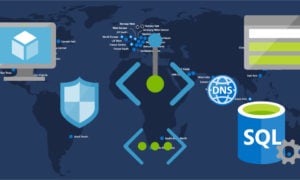Now that we have our hardware all in place, vSphere 5 Installed, our database configured and running, and vShield deployed we are ready to build our vCloud Director virtual machine, which will be Red Hat Linux, and get vCD setup and running.
Getting Red Hat
While I’m not a fan of buying Linux, we will have to make an exception in this case as vCloud Director is only supported on Red Hat Enterprise Linux 5. So the first thing we will have to do is sign up for a demo copy of Red Hat and download the ISOs. After those are done downloading we can then install a RHEL5 server and use SCP to transfer the vCloud Director binary file over to it.
Before starting your install we should make a couple modifications to your RHEL VM’s hardware, specifically we need to add a second network adapter because vCD requires two static IP addresses. I used VMXnet3 NIC’s on my VM.
After you have RedHat installed and you are able to login, we need to run ‘setup’ so we can disable the firewall and SELinux. You can also use ‘setup’ to set the two static IP addresses here too. However, if you are using VMXnet3 NIC’s they will not yet work, first we need to install VMware tools. Since this is RedHat is is a pretty simple process:
- Click “Install/Upgrade Tools” from the menu
- Mount the CD-Rom drive somewhere (ex. mount /dev/hdc /mnt/cdrom)
- Copy VMware Tools to /usr/src (ex. cp /mnt/cmdrom/VMware-tools…..tar.gz /usr/src)
- Change directory to /usr/src then Extract the tools (ex. tar xzvf VMware…..tar.gz)
- cd into the tools directory cd <name of directory>
- run the installation Perl script ./vmware-install.pl
- Reboot the VM so that both NICs are found and configured
One of the two static IP addresses will be used for the web interface of vCD and the other will be used for the console proxy sessions. We will need to reboot the VM after disabling SELinux and the firewall, do that now.
Now that we have all of our IP’s set and tools installed we can now install the rest of the required packages for vCD, you can check the vCD install guide for a list of them or just copy in the following command:
yum install alsa-lib bash chkconfig compat-libcom_err coreutils findutils glibc grep initscripts krb5-libs libgcc libICE libSM libstdc libX11 libXau libXdmcp libXext libXi libXt libXtst module-init-tools net-tools pciutils procps sed tar which
Creating SSL Certificates
If you are creating this vCloud setup for public access you will want to read through the vCD installation guide to get info on how to import certificates, but if you are creating this for internal use then we can simply generate self signed certs. To do this we just need to go to the /etc directory (ex. cd /etc) then paste in the following commands:
Note if you want a more secure key store password (other then password) change it before pasting, also make sure that the quotation marks are copied in properly and not converted to a period.
/opt/vmware/vcloud-director/jre/bin/keytool -keystore certificates.ks -storetype JCEKS -storepass password -genkey -keyalg RSA -alias http -dname “cn=vcloud, ou=vmware, o=vmware, c=US” -keypass password
/opt/vmware/vcloud-director/jre/bin/keytool -keystore certificates.ks -storetype JCEKS -storepass password -genkey -keyalg RSA -alias consoleproxy -dname “cn=vcloud, ou=vmware, o=vmware, c=US” -keypass password
Now we will have a certificates.ks file located in /etc/ we will need that information during the vCD installation.
Installing vCD
Now change directory over to where you transferred the vCD installation file to and make sure its executable by running this command:
chmod u+x <vcd installation file name>
Now we can execute the file by typing:
./<vCD installation file name>
You will be asked which IP you want to use for the web interface and which for the console proxy, you will also be asked where your certificates are located. This is where we will enter “/etc/certificates.ks” without the quotes. Later in the installation you will then be asked for your database server information. Since we will be using vCD 1.5 we will have the option of Oracle or MSSQL. After entering the proper information it will create our database structure, this process takes a couple minutes. After it is complete we should be ready to login to the vCloud Director web interface. Which is located at https://<IPaddress> where the IPaddress is the IP of the NIC that was used for the web interface… not the console proxy ip.
Congratulations you should now have a working vCloud Director lab! Stay tuned for more articles on vCD in the future.
![]()



Hello Justin, can you please help with generating SSL certs
1) how do I generate them as I only have 1 linux machine in my environment and the java is 1.4.2 so the keytool command doesnt work? also the directory “/opt/vmware/vcloud-director/jre/bin/keytool” isn’t available
2) do you have any links how to update the Java version on the linux box?
Thanks,
Mohammed